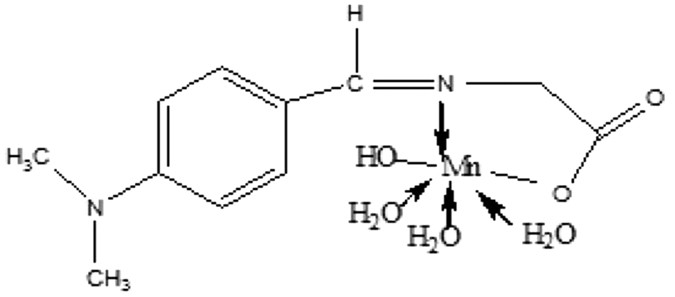
- Select a language for the TTS:
- UK English Female
- UK English Male
- US English Female
- US English Male
- Australian Female
- Australian Male
- Language selected: (auto detect) - EN
Play all audios:
Our toes can provide valuable clues about our overall health, potentially indicating underlying conditions such as nutritional deficiencies, diabetes, and circulatory issues. But, a survey
from LloydsPharmacy Online Doctor found that 50% of Brits don’t regularly check the condition of their toes or toenails - and one in six are unaware that their condition could uncover an
underlying health condition. Sheena Bagga, Pharmacist Prescriber from LloydsPharmacy Online Doctor, has explained what you need to know about toe and nail health - and eight symptoms to look
out for. Sheena said: “While often overlooked, your toenails and feet play a huge role in your overall health and it’s important to pay attention to their condition. While everyone’s toes
look different, healthy nails should have a smooth surface with light pink or translucent colouration without much variation in shade or hue.” 1. YELLOW DISCOLOURATION - Yellow
discolouration can indicate a toenail infection, which can occur on any part of the nail. This causes the nail to discolour, become crumbly, or thicken. Another cause can be nail psoriasis,
where the nail plate can become pitted with patches or lift up from the nail bed underneath. To help prevent toenail infections, it’s good practice to keep your nails short, clean, and tidy.
It’s also important to wear a clean pair of socks every day and wear shoes that fit correctly. 2. DARK NAIL STRIPES - This is known as Melanonychia, which can appear as a brown or black
band running lengthwise along the nail. In most cases, the benign cause is a normal variation in nail pigmentation. However, in some rare cases, it is a tell-tale sign of Subungual Melanoma,
a type of skin cancer. To help prevent Melanonychia, it’s crucial to focus on good nail and foot hygiene. You also want to try and avoid any nail trauma - if you do injure your nail, allow
it to fully heal properly and avoid picking at it. 3. SWOLLEN TOES - Toe swelling can be caused by a number of conditions, including lymphatic issues, poor blood flow, or even gout. With
this in mind, it’s important to speak to your GP if you are experiencing other symptoms which concern you such as pain, aching, or difficulty moving. Gout is a type of inflammatory arthritis
characterised by sudden, severe joint pain, often in the big toe, caused by the buildup of uric acid crystals in the joints. It is more likely to occur in people who are overweight, and
consuming a healthy diet that aids weight loss can help manage the condition. In addition, there are less serious causes of toe swelling such as sitting or standing for long periods of time,
wearing shoes that are too small, being overweight, dehydrated, or eating a diet that’s heavy in salt. Maintaining a healthy, balanced diet can help with some of these common issues, along
with regular exercise and movement. 4. WHITE TOENAILS - White lines or spots on the nail. also called “leukonychia”, are often caused by trauma such as stubbing your toe, however sometimes
can be a sign of deficiencies in protein, zinc, or iron. Fungal infections can also lead to whitening of the nail, whilst potentially being brittle and crumbly. You can get a fungal nail
infection if your feet are constantly warm and damp, for example by wearing trainers for a long time allowing your feet to become hot and sweaty. Although rare, fully white nails are
slightly more concerning and could be an indicator of a systematic illness in another part of the body. These include liver cirrhosis, hyperthyroidism, or diabetes. If you are concerned and
are experiencing side effects it’s important to contact your GP to identify the cause. 5. BLUE DISCOLOURATION - If your nails have a bluish hue and you notice that your toes feel unusually
cold, it may be a sign that they are not getting proper circulation. This is a common symptom of a condition called Raynaud’s disease, which causes narrowing of the smaller arteries which
supply blood to the extremities. Regular exercise can help improve blood circulation, which can be beneficial for managing the symptoms of Raynaud's, alongside helping you maintain a
healthy weight. 6. ITCHY TOES - Athletes Foot is a common fungal infection that shows as itchy white patches between your toes. It can also affect the soles or sides of your feet, sometimes
causing fluid-filled blisters. To help prevent Athlete’s Foot, make sure to completely dry your feet after washing them, especially between your toes. Also, make sure to wear clean socks
every day - cotton is best as it allows the skin to breathe more easily. 7. ULCERS ON TOES OR FEET - Unlike a blister that occurs under the skin, an ulcer is a break in the skin's
surface, appearing as an open wound. It’s very important that these are looked after to reduce any risks of infection. During the time the wound is exposed, it can leave you vulnerable to
developing an infection, which in serious cases can lead to amputation. A diabetic foot ulcer is classified as an open wound or sore on the skin that takes a long time to heal. 8. SPOON
NAILS - Inspecting your toenails on a regular basis is important. If your toenails change shape and look curved or ‘spoon-shaped, it could indicate an iron deficiency or anaemia. Iron is
essential for producing healthy red blood cells and maintaining proper nail health, so it’s important to speak to a healthcare provider who may recommend taking a supplement. While a lot of
the time, problems with toes and nails are easily treated, if you are facing symptoms due to issues such as diabetes, poor circulation, or nutritional deficiencies, consuming a healthy,
balanced diet is crucial to support your overall health.








